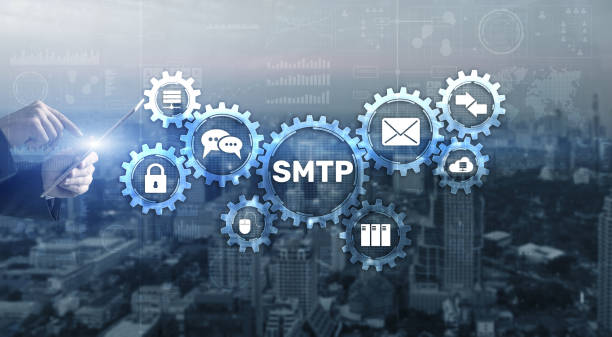An SMTP server is a computer responsible for sending and receiving emails. It functions with the Simple Mail Transfer Protocol (SMTP) by receiving emails from the email client, transferring them to another SMTP server and relaying them to the incoming mail server.

Types of SMTP Servers
A single SMTP server can send, relay, and receive emails, but it is possible to use them differently by their separate functions.
Outgoing Mail Servers
These servers are responsible for receiving email messages from clients and delivering them to the incoming mail servers. They usually have a daily limit to the number of messages they can send to reduce spam depending on the email client.
Dedicated SMTP Servers
A dedicated SMTP server is an outgoing email server specially set up to handle large volumes of emails or traffic exclusively for one client, such as a corporate account. These SMTP servers offer greater limits and flexibility than a shared public server.
SMTP Relay Servers
Relay servers are used for relay services to deliver transactional and bulk emails through a trusted third party. They are like dedicated servers that allow organisations to send mass emails at once, but a contracted third party does the heavy lifting.
Incoming SMTP Servers
These servers are responsible for storing email messages received from SMTP relays until the recipients can retrieve the message using their email clients. Incoming mail servers do not use SMTP alone. They also rely on Internet Message Access Protocol (IMAP) or Post Office Protocol (POP) to function effectively.
Fake SMTP Servers
Fake SMTP servers are used to test emails. They function like real ones and allow developers to test how apps and websites handle emails without creating a real email account.
How Does an SMTP Server Work?
Here are the basic roles of SMTP servers in email delivery.
- You send an email with your email client or app using your email address; the email client connects to the SMTP server of your domain.
- The email client submits the sender’s and receiver’s email addresses, the email body, and all attachments to the connected SMTP server.
- It then checks if the sender and recipient operate from the same domain.
- If yes, the email will be sent directly to your recipient’s incoming mail server.
- If the domains are different, the sender’s SMTP server will relay the message to another incoming server closer to your recipient, and the relay will continue until the email gets to your recipient’s incoming server.
- If your recipient’s server is down, the email will be queued and delivered whenever their server is available.
- If the message goes through another protocol like POP3 or IMAP it will be picked up and delivered to your recipient’s mailbox.